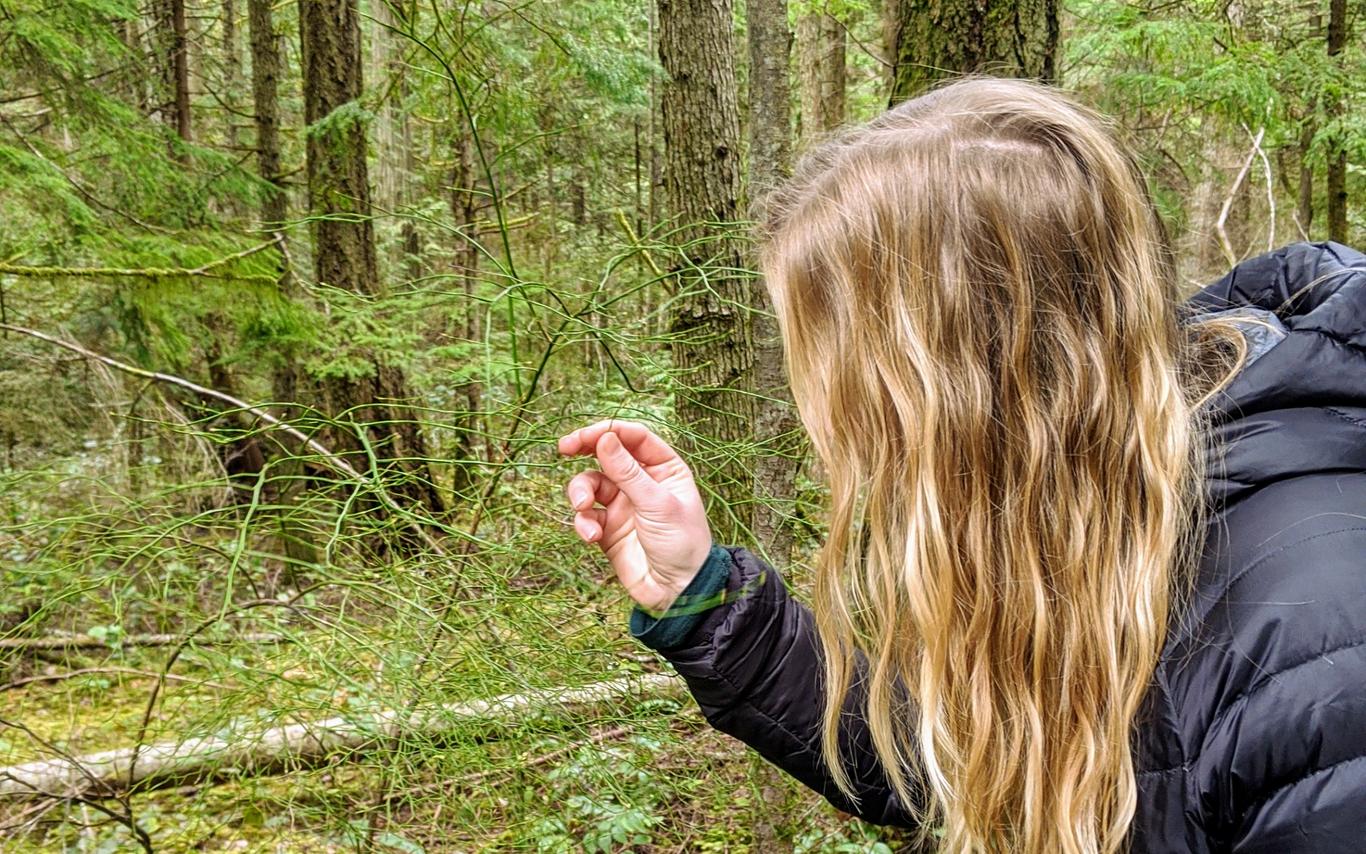On Wednesday, February 12th, I joined Jessica Pyett and a handful of volunteers at Milner Gardens & Woodland to collect data for the Plant Phenology Research & Monitoring Project. The project is a collaboration between Milner Gardens, the Ministry of Forests, Lands, Natural Resource Operations and Rural Development (FLNRORD), and the Mount Arrowsmith Biosphere Region Research Institute (MABRRI). It aims to better understand how shifting climates may affect plant health, as well as evaluate the use of field cameras to capture data on plant phenology. I have been working as a student research assistant on the photo analysis portion of this project since October of 2019; this was my first time seeing the specimens in person, as well as my first time visiting Milner Gardens.
We met the volunteers at the Milner Welcome Center at 1:30, then proceeded to the first specimen I ever evaluated in the office: a juvenile Western hemlock (Tsuga heterophylla) that died roughly two months into the photoset. Its bare, brittle branches still stood as tall as a 1.5m tree can stand, and a quick scan of the area showed that, unfortunately, it wasn’t the only juvenile hemlock that was struggling. Thankfully, the rest of the specimens seemed to be performing well, with the exception of one salal (Gaultheria Shallon) shrub that perished at the hands of a particularly heavy snowpack in January. A few red huckleberry (Vaccinium parvifolium) bushes were already showing breaking leaf buds, which is a point of much excitement among those of us that carry around plant identification books (Pojar and Mackinnon, anyone?) for fun. I say this, of course, because the bud break is occurring much earlier than expected, and before the bud break of the nearby salmonberry (Rubus Spectabilis) of all things (this is rather uncommon)!
For observation purposes, the gardens are divided into three sites: upper, mid, and lower. While approaching the lower site, I was told that this was often the most favoured stop. As we continued down, the fresh, salty ocean air filling my lungs gave me an inclination as to why this may be a fan favourite. I took detailed notes throughout the site visit, but as my attention drifted to the seemingly infinite, unoccupied coast in front of me, my notes devolved: “open cones on Cw; juvenile Bg losing needles; Dr dropping lots of seeds; wow it's beautiful”.
I am so grateful for the opportunity provided to me by MABRRI, Milner, and FLNRORD; not only to work on the Plant Phenology Research & Monitoring Project in the office, but to be able to visit the site. This visit allowed me to meet some of the incredible individuals involved in this project, including Geoff Ball, the executive director of Milner Gardens & Woodlands. It also afforded me the opportunity to see the specimens in person that I’ve been working on, and soak up the beauty of this amazing island that we are so fortunate to call home.
